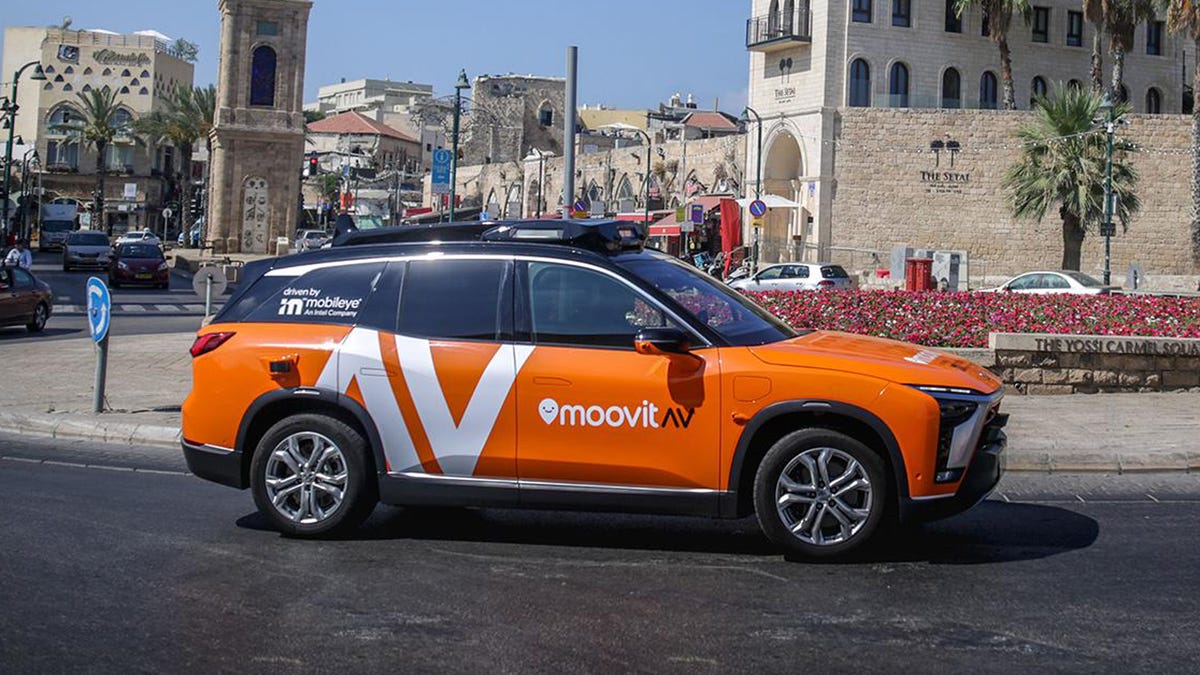Mobileye self-driving taxis heading to public roads next year
The Intel subsidiary's Mobileye Drive autonomous system will undergo public testing in Germany and Israel in 2022.
Self-driving vehicles are the holy grail for automakers. And while there are no autonomous cars or trucks available today, practically every OEM and supplier, plus a constellation of other companies are hard at work making them a reality. Moving one step closer to a hands-free future, Mobileye, a subsidiary of computer chip titan Intel , unveiled a new robotaxi at the IAA show in Munich on Tuesday.
Based on the Chinese Nio ES8 all-electric, six-passenger SUV, the Mobileye AV is the first production autonomous car fitted with the firm's self-driving system. The company calls this Mobileye Drive, and it's a Level 4 autonomous system, meaning it does not require human interaction in the vast majority of situations. To enable this, the Mobileye AV has 13 cameras, plus three long-range lidar sensors, six short-range lidar arrays and half a dozen radar units -- probably more high-tech hardware than a jet fighter.
Tying all this advanced hardware together are eight of the company's EyeQ 5 system-on-a-chip integrated circuits, which are part of Mobileye's AVKit58 system. This is the first time Mobileye Drive has been fitted to vehicles used for driverless, ride-hailing services, an important milestone for the company.
The Mobileye AV will undergo real-world testing in Munich and Tel Aviv next year. During use, trained safety drivers will monitor the vehicles as they operate autonomously. German law currently allows these vehicles to drive themselves, but regulations still require that a human be present to keep watch over everything. Curiously, these fleets of robotaxis will not be geofenced, meaning they can drive just about anywhere. Mobileye's crowdsourced mapping helps enable this impressive flexibility.
Circuits, software and a phalanx of sensors make the self-driving magic happen.
The company has not disclosed how many robotaxis it will deploy on public streets, but helping it rack up the miles, Mobileye has partnered with rental car giant Sixt. Making things super convenient, the Mobileye AV will be included in Sixt's One mobility platform. This app allows you to rent a car, use a ride-hailing service or even sign up for a car subscription, all in one place. Making things even easier, you will also be able to access the Mobileye AV via the MoovitAV service.
Logistically, Mobileye will own the robotaxi fleet in Munich and Sixt will maintain it. Electric vehicles require dramatically less service than their combustion-powered counterparts, but they still need some maintenance from time to time.
Even though they're not a reality today, autonomous vehicles could be part of the future. Mobileye is pushing this exciting technology forward with this large-scale robotaxi deployment. If all goes to plan, you might be able to purchase a Level 4 self-driving vehicle sooner than later. Amnon Shashua, CEO of Mobileye, is bullish on the technology. He projects it could be ready for consumers by 2024 or 2025, which is ambitious. In the meantime, if you want some first-hand experience in an autonomous taxi, plan on traveling to Munich or Tel Aviv next year.


